Earth Matters: Living in a recycled material world: Hitchcock Center inspires a fossil free future
| Published: 04-01-2024 11:48 AM |
As the world grapples with environmental challenges, the Fossil Free Zones initiative, championed by the Leave it in the Ground Initiative (LINGO), takes inspiration from the transformative work at The Hitchcock Center for the Environment. The center proudly holds our Fossil Free Zones badge, symbolizing its commitment to a fossil-free future.
This recognition signifies that the center does not burn oil, gas, or coal on site and relies entirely on renewables for its energy needs. Beyond certifying the center as a Fossil Free Zone, the broader vision of LINGO’s initiative is to empower communities and institutions to follow suit, creating a network of spaces committed to fossil-free living, resilience, and environmental stewardship.
During a recent tourguided by Operations Manager Casey Beebe, I delved into the intricacies of their Living Building’s design and functionality, discovering how it not only serves as an educational hub but embodies the very principles it seeks to impart.
At the Hitchcock Center, the building is more than a structure; it functions as an ecosystem, mirroring the resilience and efficiency found in nature.
The center captures energy and recycles materials, showcasing the synergy between human-made spaces and the natural world. From the optimized use of solar panels, to the slanted roof mimicking mountain slopes, every element is meticulously designed to align with ecological principles.
“We did not hide the renewable mechanics in the building, so the public can see them. So people ask questions,” Beebe says.
Hitchcock Center produces 100% of its energy with its solar panels. Yet not all green technologies were that easily obtained. Pioneering fossil-free practices came with challenges for the center, such as finicky new LED lights and obstacles with the water system. However, the act of constructing the building and facing those challenges lays the foundation for future advancements. As more fossil-free buildings emerge, the demand for products and skilled technicians will rise, and building Living Buildings will become more accessible.
Hitchcock Center’s efforts to minimize reliance on fossil fuels extends to sourcing materials locally and reducing waste. The Living Building’s weight incorporates nearly 80% locally sourced materials, and steps were taken to use materials with minimal embedded carbon and fossil fuel use.
Article continues after...
Yesterday's Most Read Articles
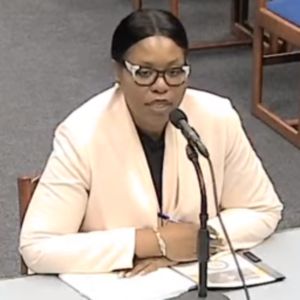 Island superintendent picked to lead Amherst-Pelham region schools
Island superintendent picked to lead Amherst-Pelham region schools
 Reyes takes helm of UMass flagship amid pro-Palestinian protests
Reyes takes helm of UMass flagship amid pro-Palestinian protests
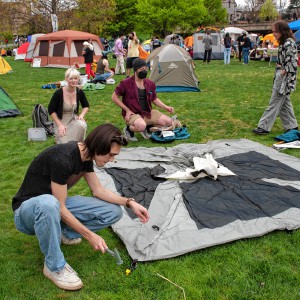 Pro-Palestinian encampment disperses at UMass, but protests continue
Pro-Palestinian encampment disperses at UMass, but protests continue
 Sole over-budget bid could doom Jones Library expansion project
Sole over-budget bid could doom Jones Library expansion project
 Amherst council confirms Gabriel Ting as police chief
Amherst council confirms Gabriel Ting as police chief
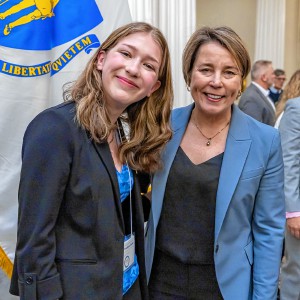 Hampshire County youth tapped to advise governor’s team
Hampshire County youth tapped to advise governor’s team
The way the building deals with waste and greywater embodies water conservation and waste reduction efforts. Composting toilets replace traditional sewage systems, and a greywater system processes sink water through a constructed wetland, aligning with the center’s ethos of emulating nature, where waste is a foreign concept.
“We have a special focus on being efficient and not wasteful because in nature, there is no concept of waste. One species’ waste becomes another species’ food,” Beebe says.
The building’s design incorporates a fully electric, smart HVAC system that automatically adjusts to external conditions, promoting natural ventilation. Motion sensor lights and other energy-efficient features minimize unnecessary energy consumption.
While the physical structure embodies sustainability, the Hitchcock Center’s true power lies in its educational programs and community engagement. Catering to diverse age groups, from afterschool programs to preschool initiatives to adult lecture series, the Center engages its community in understanding the interconnectedness of human actions and the environment.
“As the public moves through this space, hopefully, they will always take away something new, even if that’s not the reason they originally came to visit,” Beebe says.
So what is the path forward in inspiring environmental change and climate action beyond the Living Building? The Hitchcock Center serves as a blueprint for the future of fossil-free building practices, pushing the boundaries of what is possible. Every innovation, from composting toilets to smart HVAC systems, contributes to a narrative of fossil-free living that transcends the confines of the center’s walls. “We don’t have to compromise. You can still have an amazing, beautiful, modern building, but not have it have so much impact,” Beebe emphasizes.
The journey doesn’t stop here for Fossil Free Zones; it expands to a macro scale, where collective efforts can bring about substantial change.
The Hitchcock Center is not alone in its commitment to fossil-free living. Other examples of Fossil Free Zones in western Massachusetts include the R.W. Kern Center at Hampshire College, the Class of 1966 Environmental Center at Williams College, and Smith College’s Bechtel Environmental Classroom.
The Connecticut River Valley stands as a haven of renewable energy, and you can be part of the movement. Identify your spaces or those in your community as fossil free by contributing to our map at fossilfreezones.org. Encourage the public to step forward and be recognized for their commitment to a fossil-free future.
The narrative of the Hitchcock Center and the Fossil Free Zones initiative intertwine; painting a picture of a future where living without fossil fuels is not just a futuristic dream but the reality in an increasing number of spaces. It’s a journey that begins with education, extends through innovation, and culminates in a shared commitment to preserving the planet for generations to come.
Margaux Paine (she/her) is the Fossil Free Zones manager at Leave it in the Ground Initiative (LINGO). Raised in the Valley, particularly in Northampton, Margaux has deep roots in the local community. She can be contacted at margaux.paine@leave-it-in-the-ground.org.
Earth Matters has been a project of the Hitchcock Center for the Environment for 14 years. HCE’s mission is to educate and to inspire action for a healthy planet. Our Living Building and trails are open to all at 845 West St. in Amherst. To learn more, visit hitchcockcenter.org.

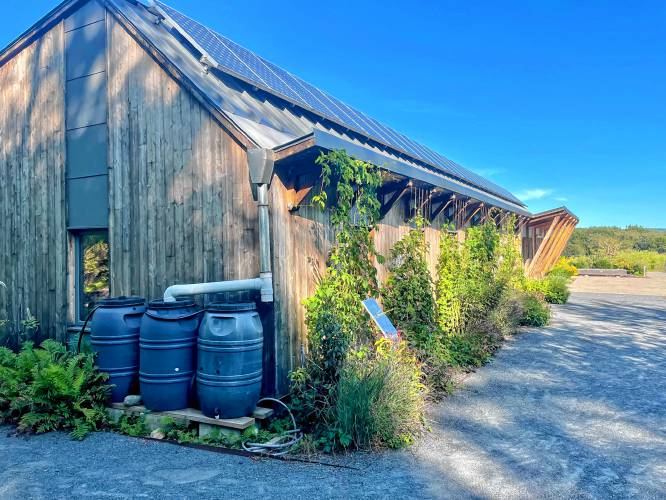
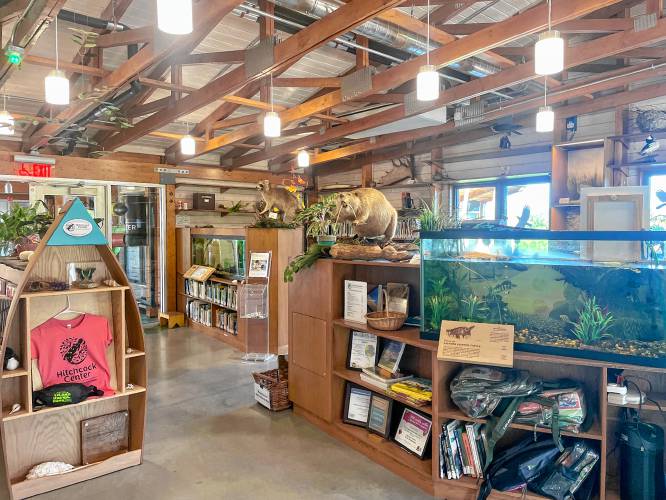
 You’re up next: Western Mass open mic scene heats up post-pandemic
You’re up next: Western Mass open mic scene heats up post-pandemic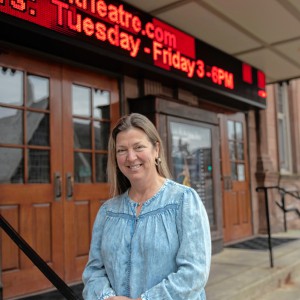 One upon a story slam: This year’s Valley Voices winners head to a final competition
One upon a story slam: This year’s Valley Voices winners head to a final competition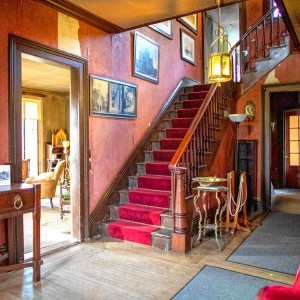 Preserving a key part of Emily Dickinson’s legacy: Historic Evergreens house reopens at the Emily Dickinson Museum
Preserving a key part of Emily Dickinson’s legacy: Historic Evergreens house reopens at the Emily Dickinson Museum The Beat Goes On: Chamber music at The Drake, a Saint Patrick’s weekend musical smorgasbord, and more
The Beat Goes On: Chamber music at The Drake, a Saint Patrick’s weekend musical smorgasbord, and more